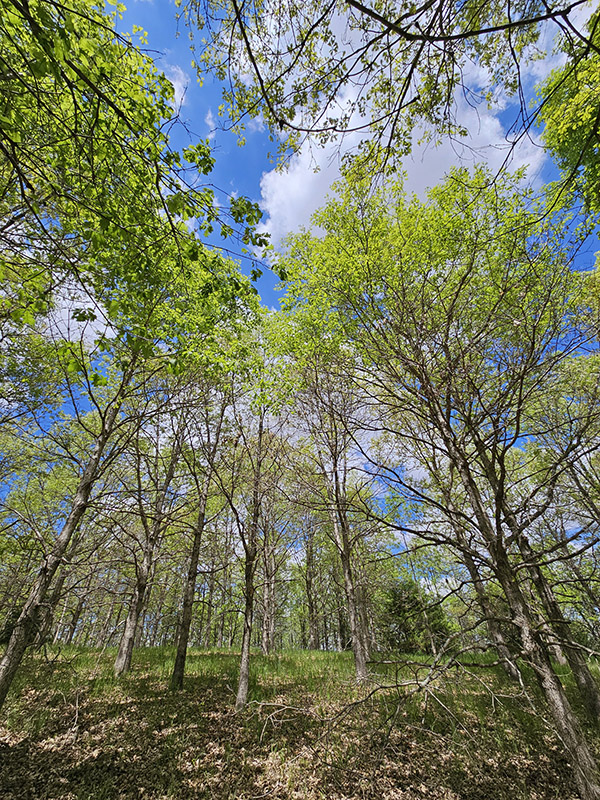Fightin’ in a phone booth

Among the many legendary boasts attributed to the great boxer Muhammad Ali (also known as “The Louisville Lip”), is a little-known taunt he made during his three-year exile from professional boxing after his refusal to serve in Vietnam on religious grounds: “That boy ain’t nothin’ to me! I’ll fight him anywhere! I’ll fight that chump in a phone booth in the middle of Times Square!”
Whereas many of Ali’s opponents cursed him for getting on his bicycle and eluding their punches as he danced endlessly around the ring, “fightin’ in a phone booth” was meant to evoke his willingness to stand toe-to-toe and punch it out in close confines.
Sadly, conservationists in Iowa often find themselves fightin’ in a phone booth. In what is often referred to as “the most altered state in the nation,” managers of natural prairies, forests, and wetland habitat in Iowa are challenged to maintain biodiversity, protect soils & watersheds, and promote wildlife populations on isolated, postage stamp-sized fragments of what used to be. Based on soils data and original land surveyors’ records, pre-1830’s Iowa is believed to have had 6-8 million acres of forested land. This was whittled down to as little as 1.5 million acres by the 1970’s. Native prairies are even worse off, with only 0.1 percent thought to remain.
Given the high value of agricultural land these days, the mere suggestion of planting trees on tillable acres is as if I’d just asked for ketchup on my steak. Practicing forest management on a footprint that’s effectively 25 percent of its original domain can feel like fightin’ in a phone booth. Thankfully, there are some Iowans who buck the trend.
Last May I had the privilege of getting to review a 30-year old tree planting in southern Marshall County. Spanning 80 acres of what was formerly steep, highly erodible cropland, tens of thousands of tree canopies now serve as a permanent cover crop for the soils. The red oaks and black walnuts are 12-14″ diameter at breast height, about halfway to harvestable size. The wind whistled through white pines as I flushed an owl from its perch. Turkeys had been dusting among the fallen pine needles. A stand of white oaks was so solid that my boots walked over a crunchy layer of leaves.
The planting was established by the late Marshalltown resident Leonard Grimes. If Muhammad Ali was the self-proclaimed Greatest of All Time at boxing, then I will declare Leonard as the GOAT of conservationists in central Iowa. Not listening nor caring what his neighbors and fellow farm landowners must have been whispering at the coffee shop, Leonard planted upwards of 300 acres of trees on marginal crop lands across Marshall County from the 1960’s all the way until his death at the age of 89 in 2015. Leonard saw more value in adding trees back to our depleted landscape than in trying to tinker with what was already forested.
Realizing that I was in the peak of songbird migration at the time, I turned on the Merlin Bird Identification app on my phone. (Check this out if you don’t know about it.) In the final half hour of my walk, I recorded 15 unique species of birds occupying Leonard’s trees, including Baltimore Oriole, Indigo Bunting, Rose-breasted Grosbeak, Tufted Titmouse, Goldfinch, and more.
On my way back to the road, I took a shortcut across the adjacent rowcrop field. The soil was bare and sloped steeply down toward the creek, where Leonard’s riparian forest buffer was waiting to intercept the runoff of the next storm. I could see cupping and curling on some of the tree leaves which had caught a whiff of pesticide from when the field had been sprayed. Upon reaching the truck, I checked the Merlin Bird app and reviewed how many birds had been recorded during my traverse of the bare crop field: zero.
Leonard’s planting created an immediate impact for conservation that will continue to grow in the coming decades as the trees do. I think about this a lot, compared to the other ways we conservationists spend our time on activities that have more short-term and ephemeral benefits. Mowing, thinning, controlling weeds or invasive plants, prescribed burning, seeding cover crops, etc…these things are important to do as we maintain the natural areas that we do have, but their outcomes and the legacies they leave in our wake are much shorter-lived.
With profit margins in farming razor-thin, bin-busting yields almost a yearly occurrence, and an overdue update to the Farm Bill, perhaps more landowners in the future will again look at conservation as a desirable alternative. Reforestation is not a silver bullet to the challenges facing rural Iowa, but by strategically retiring sensitive lands along streams, unprofitable acres, and Highly Erodible Lands (HEL), we work towards solving issues like nutrient and sediment pollution, songbird, pollinator, and other wildlife population decline, and diversifying our economic portfolio. Iowa’s wood products industry supplies 17,000 jobs, generates $30 million in annual timber revenues to landowners, with a total economic impact of $5 billion.
Forest management need not simply be relegated to what’s currently forested today. To cite Aldo Leopold, the two essential tools of forest management include both the axe and the shovel. And although Muhammad Ali may have felt comfortable fighting in a phone booth, I’d be willing to bet that like Woody Guthrie, he’d prefer to be a little less fenced in.
Joe Herring of Eldora is a forester with the Iowa Department of Natural Resources.






